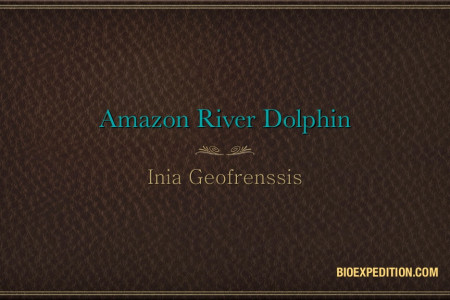
The Living Amazon Initiative
CARAÇAS WWF VENEZUELA GEORGETOWNO LIVING AMAZON INITIATIVE BOGOTA O GUYANA A contribution towards a greener development model in the Amazon PARAMARIBO O CAYENNE COLOMBIA SURINAME SFRENCH One in ten known species on Earth lives in the Amazon. Its forests contain 90-140 billion metric tons of carbon, the release of even a portion of which would accelerate global warming significantly. Over 30 million people living in the Amazon depend on its resources and services – not to mention many millions more living as far away as North America, Europe, Asia and Africa, but still within the Amazon's far-reaching climatic influence. GUIANĂ Blue and yellowacw O Puerto Asís Brazil nut tree (Bertholletia excelsa) ECUADOR O Puerto Leguízamo Rapidly expanding global markets for meat, soy and others, and the imminent realization of large-scale transportation and energy infrastructure projects coupled with poor planning are contributing to deforestation and increased pressure on the natural resources and environmental services upon which millions of people depend. Increased temperatures and decreased precipitation caused by global warming will exacerbate these trends. OQUITO OCuenca BRAZIL O Santarem 1 Manaus Although WWF's presence in the region has been key to many conservation results over the years, it is with the articulation of the Living Amazon Initiative in 2008 that WWF has been able to bring together 40 years of experience as part of a unified front to address the challenges to the Amazon Biome as a whole. PERU O Iquitos O Leticia O Moyobamba Over the next years WWF will develop far reaching and powerful partnerships with governments, civil society, and the private sector to promote the transformational processes needed to foster a common vision for an ecologically healthy Amazon Biome that maintains its environmental and cultural contribution to local peoples, the countries of the region, and the world, within a framework of social equity, inclusive economic development and global responsibility. Pink river dolphin (Inia geoffrensis) OPucallpa O Porto Velho g white-lipped péccary (Tayass KEY AMAZON BIOME OLIMA AMAZON BASIN O. Puerto Maldonado NATIONAL BOUNDARIES CAPITAL CITIES O REFERENCE CITIES - PROTECTED AREAS BOLIVIA O BRASILIA INDIGENOUS TERRITORIES MAIN RIVERS ROADS AMismi Mountain OLA PAZ DEFORESTATION HYDRO-POWER INFRASTRUCTURE* O Cochábamba. ALTITUDE AND DISTANCE OF KEY GEOGRAPHIC POINTS TO THE MOUTH OF THE AMAZON RIVER VALUING NATURAL ECOSYSTEMS SOUND LAND PLANNING GREEN AGRIBUSINESS SUSTAINABLE INFRASTRUCTURE Mismi Mountain, Arequipa - Peru (source of the Amazon) 5500 Andes O Opportunistic land use, characterized by land grabbing, speculation and a tenure system fraught with inefficiencies and lack of enforcement is one of the Amazon's most critical threats. In the past, the building of roads has facilitated uncontrolled migration to inaccessible areas with the result of increased land-grabbing, deforestation, and expansion of unsustainable extractive activities. Dam construction, as well, entails a major disruption to river connectivity and severely impacts on aquatic species. One of the main drivers of forest conversion in the Extensive cattle ranching is the number one culprit of deforestation in virtually every Amazon country. Eighty per cent (80%) of deforested areas of the biome are occupied by cattle pastures. Agriculture is the second main cause of forest conversion, and it is also a main cause of soil erosion and river water siltation. Amazon is the perceived low economic value of ecosystem goods and services compared to other uses of the natural systems. Cuenca 2500 Cochabamba 2500 Porto Velho Puerto Asis 260 Leticia Manaus Santarem Puerto Leguízamo Iquitos 100 Through the promotion of sustainable extractive activities and others such as forest based carbon Through capacity building, improved policy proposals and the promotion of creative conservation and sustainable land use schemes, WWF works by advancing appropriate land use planning as a means to ensure optimum design and enforcement of tenure and rights to land. Atlantic Ocean initiatives, WWF fosters the appropriate valuation of natural ecosystems, based on their key environmental goods, the services they provide and the livelihoods they sustain. Together with the public sector, civil society and private companies, WWF works based on scientific methodologies to ensure infrastructure is planned, designed and implemented to minimize impact on natural ecosystems and cultural diversity. 6400 Km 4650 Km 4500 Km 4400 Km 4000 Km 3500 Km 2900 Km 2250 Km 1450 Km 550 Km WWF works fostering best agricultural and ranching management practices on lands that are appropriate and legal for such activities. Andean highlands (5500 - 2500 m.a.s.l.) Montane forest (3000 - 500 m.a.s..) Lowland forest (500 -0 m.a.s..) Printed on Mohawk Options, 100% PCW, paper which is 100% post consumer waste, is made with process-chlorine-free, manufactured with non-polluting. windgenerated energy through a contract with Community Wind Energy, and is certified by Green Seal and the Forest Stewardship Council, which promotes environmentally appropriate, socially beneficial and economically viable management of the world's forests. The geographical designations given here do not imply the expression of any opinion whatsoever on the part of WWF concerning the legal status of any country, territory, or area, or concerning the delimitation of its frontiers or boundaries. * Active and proposed projects. MOHAWK PACIFIC OCEAN
The Living Amazon Initiative
Source
Unknown. Add a sourceCategory
GeographyGet a Quote









